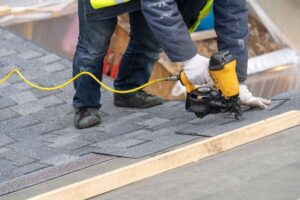Improved Energy Efficiency
Did you know that heating and cooling account for about 50% of the energy used in the average home? By adding insulation to your attic during a roof replacement project, you can reduce the amount of energy needed to heat and cool your home. This is because insulation acts as a barrier to heat flow, keeping warm air inside during the winter and outside during the summer.In addition to reducing energy consumption, adding insulation can also help to reduce your energy bills. By using less energy to heat and cool your home, you’ll see a noticeable decrease in your monthly utility bills.
Prevention of Ice Damming
Ice damming occurs when snow on your roof melts, runs down to the colder eaves, and refreezes, creating an ice dam. These ice dams can damage your roof, gutters, and even your home’s interior. However, adding insulation to your attic during a roof replacement project can prevent ice damming from occurring in the first place.When you add insulation to your attic, you’re creating a barrier that prevents heat from escaping through the roof. This keeps the roof cold, which prevents snow from melting and refreezing on the eaves. By preventing ice damming, you’re protecting your home from potential water damage and costly repairs.
Types of Insulation
When adding insulation to your attic during a roof replacement project, there are a few different types of insulation to choose from. The most common types of insulation are rolls, batts, and blown-in insulation.Rolls and batts are made of fiberglass or mineral wool and come in pre-cut lengths. They’re easy to install and are typically used during roof replacement projects because they can be layered over the existing insulation. Blown-in insulation, on the other hand, is made of cellulose, fiberglass, or mineral wool and is blown into the attic using a special machine. Blown-in insulation is great for attics with irregular joist spacing or hard-to-reach areas but requires a lot of set up and preparation which makes it difficult to apply quickly during a roofing project.
Determining the Right R-Value
The R-value is a measure of an insulation material’s ability to resist heat flow. The higher the R-value, the more effective the insulation is. The appropriate R-value for your home will depend on your climate zone and the type of insulation you choose. Most of the time we add R-30 fiberglass insulation layered over what’s existing to increase the R-value quickly so we can close the roof and get it water tight as soon as possible.At Green Collar, our team of experts can assess your home’s current insulation situation and recommend the best type of insulation and appropriate R-value for your climate zone. We’ll take into account factors such as the size of your attic, the existing insulation, timeframe, and your budget to provide you with a customized solution that meets your needs.






